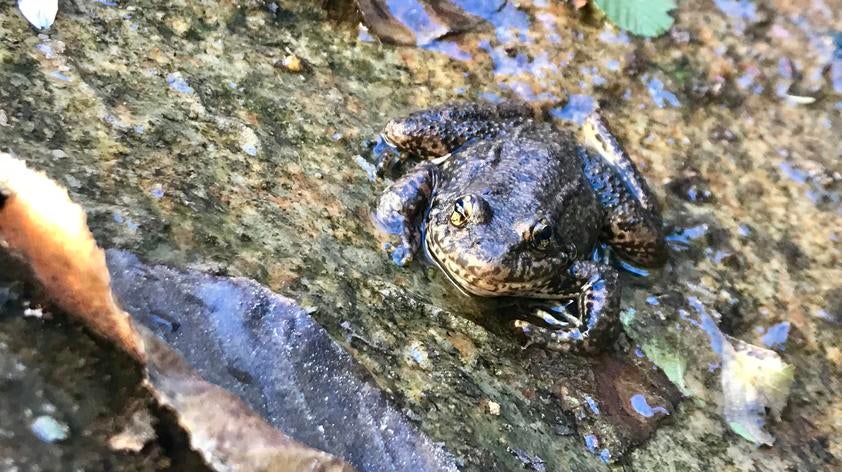
A different global pandemic
With most people in the country now working from home or practicing social distancing in an effort to combat the spread of the coronavirus, pandemics are receiving a lot more attention than usual. But in the amphibian conservation world, pandemics have been at the forefront of discussion for many years.
That’s because amphibians are currently threatened by a fungal pathogen called Batrachochytrium dendrobatidis (or “Bd” for short). In frogs, Bd can cause the disease chytridiomycosis (“chytrid” for short). It’s a skin disease, which is particularly problematic for amphibians, which can breathe, osmoregulate, and thermoregulate through their skin. Bd has infected hundreds of amphibian species around the world and has contributed to the global amphibian extinction crisis, in which thousands of amphibian species are on the decline.
Mountain yellow-legged frogs are our local representative of this extinction crisis.
This species formerly inhabited mountains in San Diego county, but now only remains at 9 sites in Southern California, with fewer than 200 wild adult frogs estimated to remain at these locations. The remaining populations are impacted by Bd, and San Diego Zoo Global is working to understand exactly how Bd impacts these frogs, and what we can do to better protect them.
Pandemics occur when an infectious disease has exhibited a sudden increase in cases and has spread across multiple countries or around the world. Like coronavirus, Bd was spread around the world through human activities like international trade and travel. Unlike coronavirus, Bd is not a virus but a fungus. Catching and recovering from chytrid does not necessarily mean that a frog can’t contract it again.
Also, unlike coronavirus, humans can’t be infected by Bd. However, we can still move it around when we (inadvertantly) move infected animals from one place to another.
So what can we do to counteract Bd for the mountain yellow-legged frogs?
One activity we are currently engaged in is disease monitoring. After we reintroduce frogs that were bred under human-managed care into the wild, we revisit their reintroduction sites to try to find them. When we do find them, we take a non-invasive skin swab (we basically just rub a special q-tip on the frog’s skin) to test the animal for Bd.
These tests will allow us to better understand whether there are certain types of individuals (for example, younger frogs) that are more susceptible to Bd, if there are certain times of year (for example, the fall through spring—Bd tends to prefer cooler temperatures) where Bd is more problematic, or if there are any pre-reintroduction treatments that can help prevent Bd.
Much remains to be understood about how the chytrid fungus is impacting mountain yellow-legged frogs. Certain individuals appear to be able to handle the pathogen, while others are more vulnerable.
One male frog we find in the same spot every year – individual D072, who we reintroduced as a tadpole in 2016 – has both caught and cleared chytrid multiple times, though he never showed any obvious symptoms of the disease! What is so special about D072? Is it something about his physiology, his behavior, or the habitat he occupies?
These are the sorts of questions we’ll be trying to answer this year to help conserve mountain yellow-legged frogs in the face of this disease.













